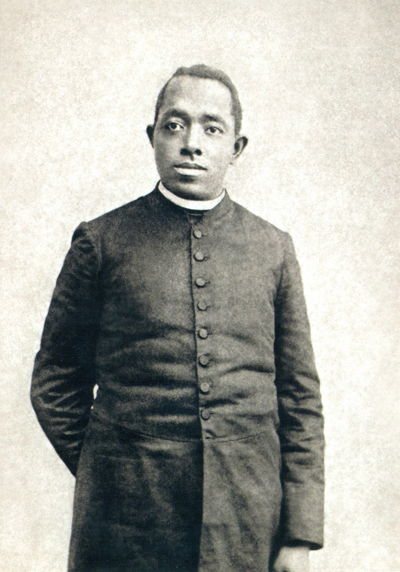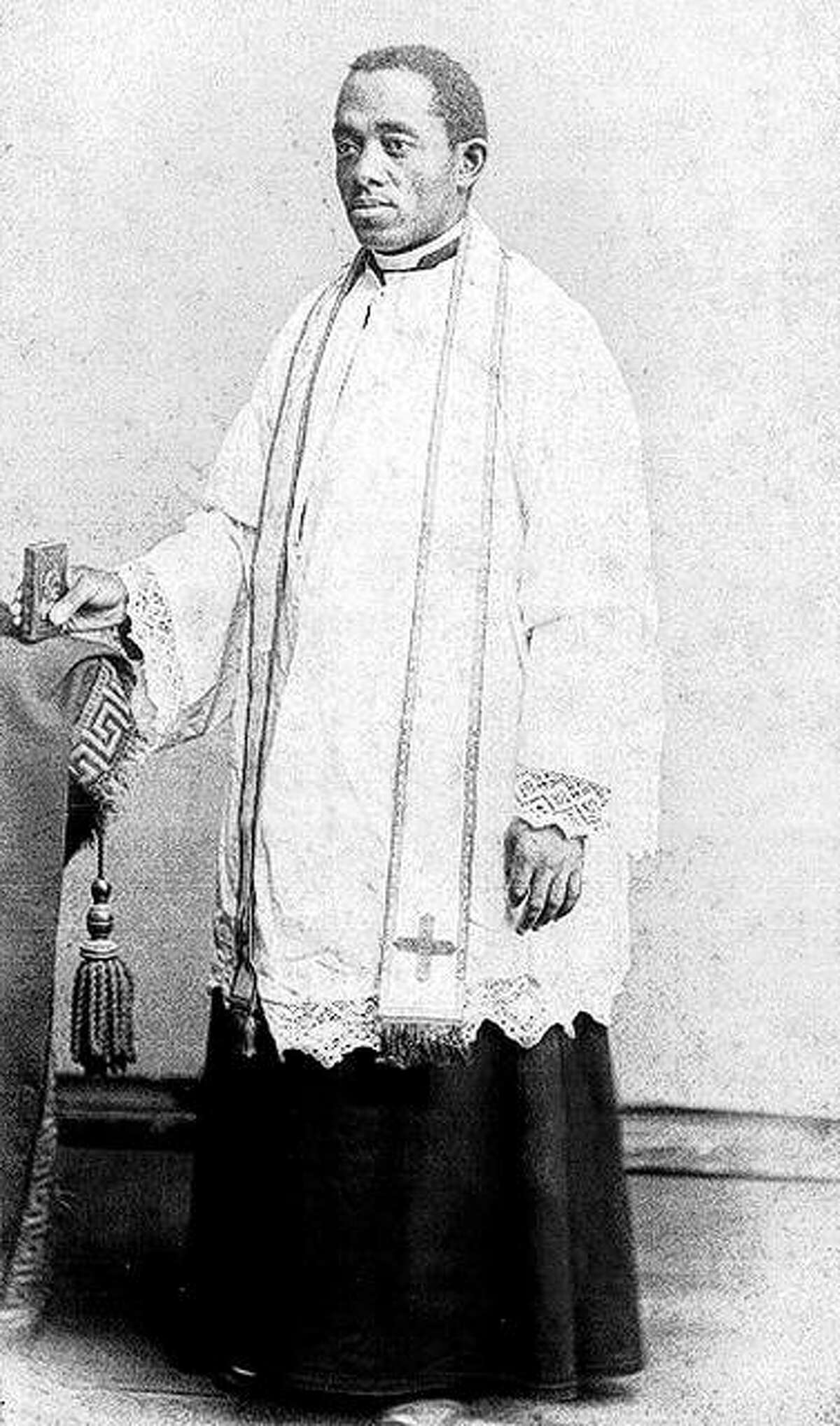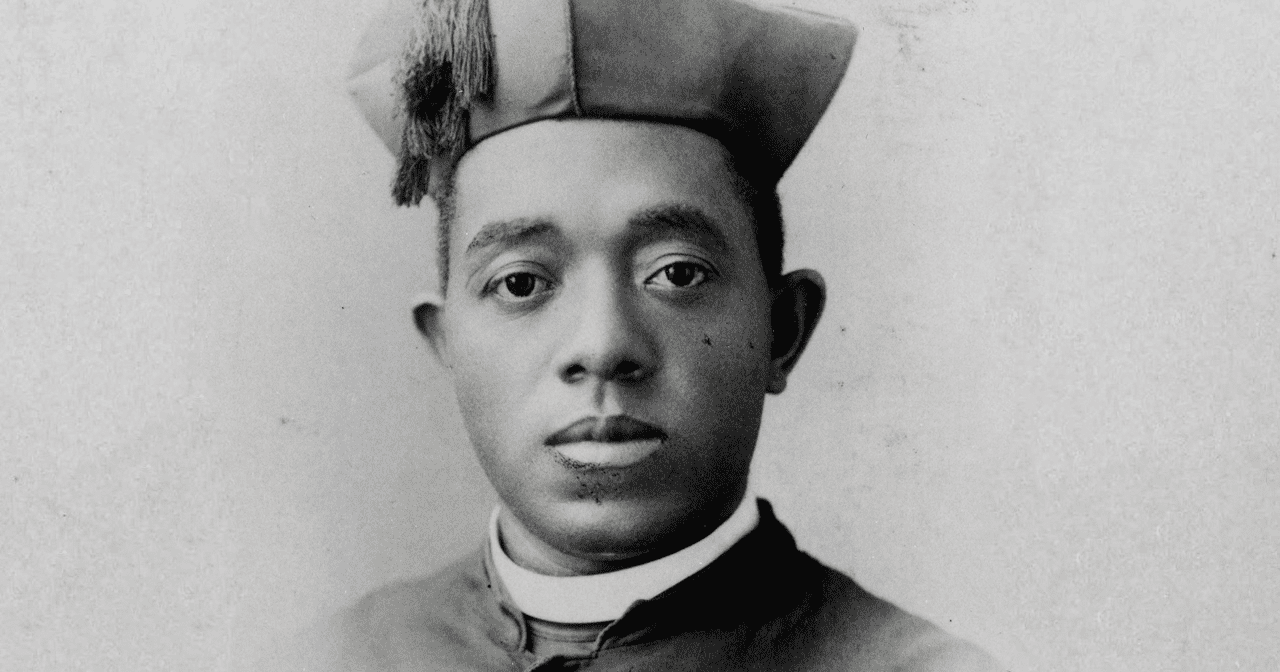Born into slavery, the 1st African American Catholic priest ordained in the United States.
Augustus John, the 2nd of 3 children, was born into slavery on April 1, 1854, in Brush Creek, Missouri and baptized in the Catholic Church. His mother, Martha Jane Chisley, had been given as a wedding gift to the Eliot family. She met her husband, and Augustus’ father, Peter Paul Tolton who was a fellow slave working at a distillery.
When he was 7, his father escaped to join the Union Army but died of dysentery in a military hospital. That same year, the Tolton family escaped from slavery, via the Underground Railroad, to Quincy, Illinois. Him and his siblings were soon enrolled at Saint Boniface Catholic School, but they were taunted and harassed, and their mother withdrew them from school after only a month.
He found work in a tobacco factory to help support his family. After work, a small group of dedicated nuns and priests taught him to read and write in both English and German. They arranged for him to attend Saint Lawrence during the winter months when the tobacco factory was closed.
At the age of 20, he was recruited to assist 2 local priests to establish a tuition free Catholic school for the Black community which became very popular with students eager to study the Catechism but was shut down by Baptist and Methodist ministers.
He then gained admission into Saint Francis Solanus College and at the age of 26 graduated as valedictorian.
He desired to become a priest, inspired by those that had cared for him, but was rejected by every seminary he applied and so with assistance, he was arranged to study at Pontifical Urban University in Rome. There, he learned a 5th language, Italian.
At the age of 31, he was ordained celebrating his 1st public Mass in Saint Peter’s Basilica on Easter Sunday.
The US was still considered a mission territory and Rome directed Augustus to return to serve as a Catholic missionary to the Black communities. He returned to Quincy but met a lot of resistance from the African American Protestants and secret societies and was reassigned to Chicago per his request, believing he had been a disappointment.
Although he felt pressure again, he received permission to open a temporary storefront mission, and began the construction of St Monica’s Catholic Church. It required significant capital from a poor district and so he embarked on an aggressive fund-raising campaign that included him performing speaking engagements throughout the US. The parish quickly grew from 30 parishioners to 600 and he gained national attention. Even several news articles covered his eloquent qualities and importance.
He appealed to all, influenced great change in the perception of newly freed African Americans, and collected major funds for his church which continued to grow but it was never completed, only receiving a temporary roof to be used for Mass and religious education.
At the age of 39 he began to be plagued by spells of illness as he neglected his health to care for the community and was forced to take temporary leaves of absence.
During a heat wave in Chicago, he collapsed and died on July 8, 1897, at the age of 43 at Mercy Hospital. His funeral included 100 priests.
Following his death, St Monica’s was made a mission of St Elizabeth’s Church, and it was closed in 1924.
For God’s Glory.


